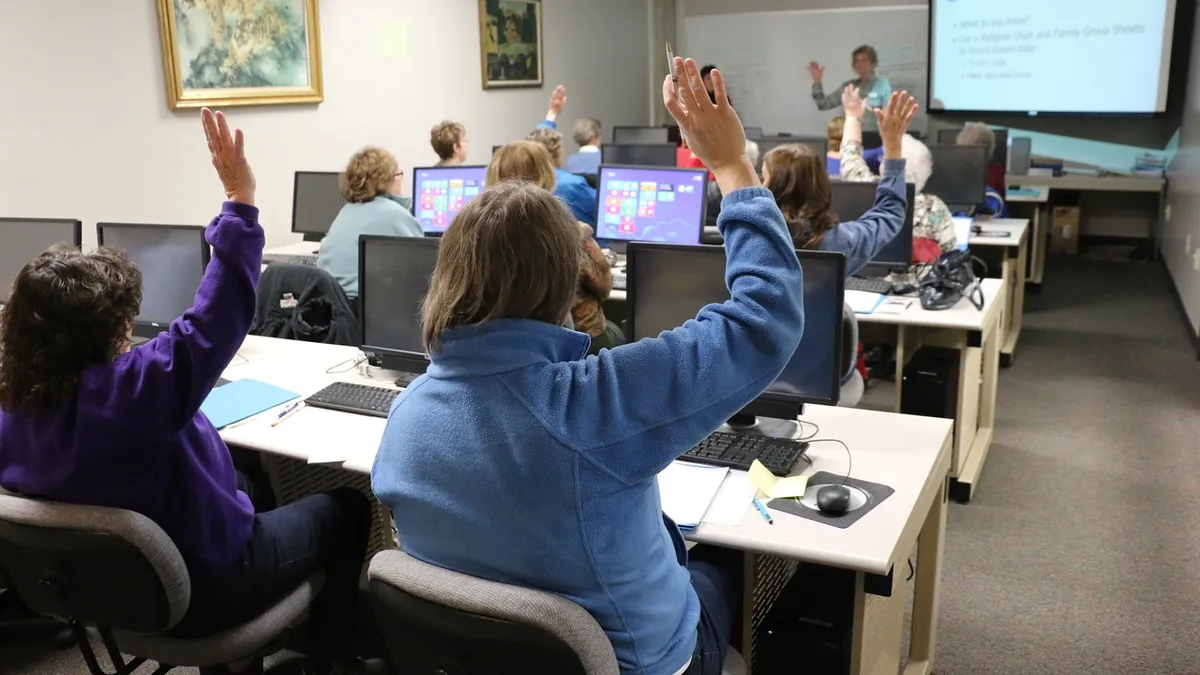Dive Brief:
- Career "on-ramp" programs can help working adults gain new skills and access career pathways, but many are under-resourced and therefore unable to scale to meet demand.
- That's according to a new report from the Strada Institute for the Future of Work, which looked at the efficacy of nine such programs: i.c.stars, JobTrain, JVS San Francisco, LaunchCode, Per Scholas, Philadelphia Works, Samaschool, STRIVE International and Techtonic.
- It found a major challenge facing these programs is that employers often see them as goodwill but not a good investment.
Dive Insight:
According to the report, 32 million adults lack jobs or the skills and resources needed to find gainful employment. Yet while on-ramp programs have high job placement rates, they reach less than 1% of those adults. With around 65 programs in all, the still-nascent industry — whose job placement focus puts it in competition with community colleges — reaches only about 100,000 people around the U.S.
The report recommends several ways on-ramp programs could scale:
- Modernize budgets.
- Adopt an apprenticeship model to get employer buy-in and position the programs as a talent pipeline.
- Provide support to participants after program completion and work with employers to do the same.
- Keep better track of employment and other outcomes.
On-ramps' early challenges draw attention to the broader issues facing postsecondary education providers as the industry doubles down on workforce development — and, like on-ramps, aims be a cost-effective option for adult and low-income learners with some or no prior postsecondary experience.
That shift is critical with nearly half (46%) of U.S. employers saying they struggle to fill jobs due to a lack of applicants with relevant skills, according to a July 2018 report from the ManpowerGroup, up from 32% in 2015. The rate was even higher for larger companies.
Even on-ramps can help address an education "mix-match" attributed to a major imbalance between the types of jobs available in the U.S. and the share of people with the corresponding education. Employers are stepping up to help address the disparity, working with community colleges, bootcamp providers and other groups to design curriculum and create educational pathways into their fields. But as the Strada report suggests, they may be more willing to participate in such efforts on their own terms.
Recent reports have offered ideas on how colleges and other postsecondary workforce development programs can better address employers' skills needs. They include collecting better data, soliciting stakeholder input, raising awareness around the issue and, perhaps most elusively, accessing federal and industry funding.










